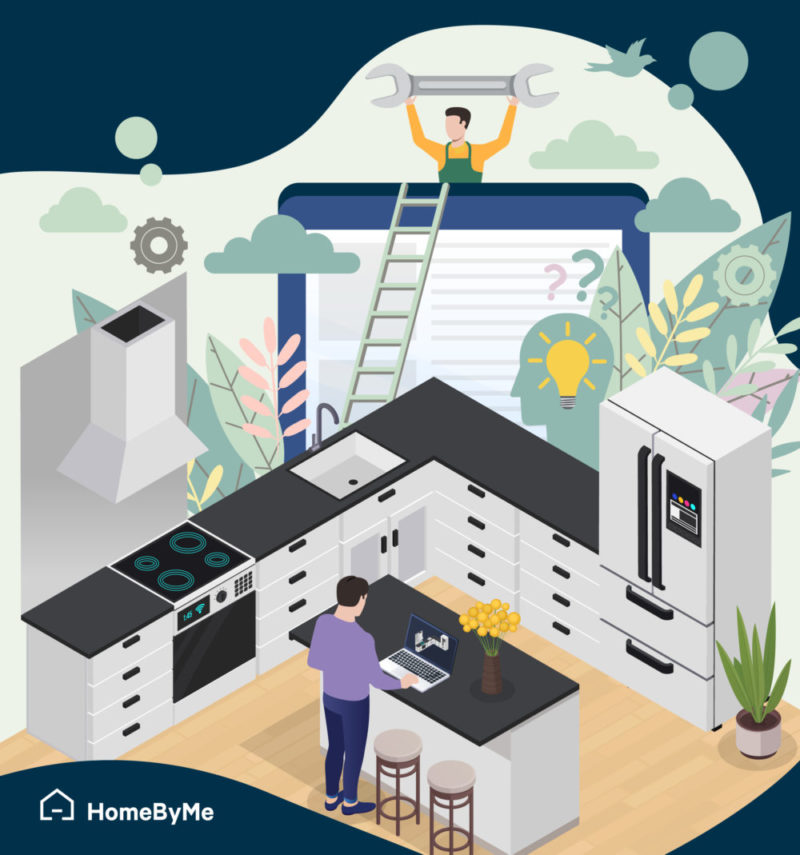Design trends June 29, 2020
3D planning solutions can help kitchen retailers cater to mindfulness trends and minimize stress

In the mindfulness era, consumers are constantly looking for ways to improve wellbeing.
A high-quality 3D planning solution can help kitchen retailers offer spaces that address wellbeing trends and also eliminate stress during the design process.
Kitchen retailers have been slow to address one of the millennium’s most significant and enduring consumer trends – wellness. With a global economic value of US$4.5 trillion in 2018, it is clear that consumers are becoming extremely mindful and are willing to invest in their wellbeing. The industry grew by 6.4% annually from 2015–2017, nearly twice as fast as global economic growth. Despite this major opportunity, kitchen retailers could be doing more to offer collections, experiences and ideas that tie in with wellness.
The Global Wellness Summit identified the wellness kitchen as one of the most important wellness trends to watch in the coming years, poised to transform the most used room in most people’s homes into a space that fosters a healthier lifestyle and is good for the environment. The fundamental principle behind wellness kitchens is that they are harmonious in look and feel, but they need to be functional, too.
Failing this, the user experience will be suboptimal and consumers will brush off any marketing efforts in this regard as a marketing gimmick, merely lip service to a lifestyle choice that more and more are making.
To be successful, wellness must be incorporated into kitchen retailers’ strategies at three major stages:
#1 Merchandising and catalog creation
For a compelling wellness offering, kitchen retailers must first include products and elements associated with wellness into their online and in-store catalogs. The principles governing the elements in a wellness kitchen are well documented, and include temperature and humidity controlled areas like cupboards that mean that not all food is stored at freezing or near-freezing temperatures.
The concept encourages bringing nature into the kitchen and the growing of fresh food. Elements that kitchen retailers could include to address this range from indoor herb and vegetable gardens to innovative in-kitchen composters. But bringing nature into the kitchen is not just about plants: incorporating natural and sustainably sourced materials into the catalog is also an essential part of a wellness-related offer.
Wellness technology also has an important role to play. Kitchen retailers must offer items such as air quality sensors, multi-use and ergonomic appliances, low energy-use devices and hands-free taps, with many more making an appearance in the market.
#2 Kitchen design
Kitchen design has been widely regarded by consumers as both their favorite and most hated part of the process. Overwhelmed by choice; don’t know where to start; concerned about staying within budget – these are just some of the concerns commonly heard from consumers who are daunted by the design process, and so kitchen retailers need to find a way to give them more control.
The good news is that technology has a solution for this particular issue, with 3D kitchen planning platforms such as HomeByMe for Kitchen Retailers making the process of designing kitchens a breeze. The solution marries strong design principles with real life installation acumen to accurately address needs and help consumers bring designs to life in a stress-free manner.
Older 3D planning software involves consumers having to download executable files onto their devices – resulting in complexity from the word go. HomeByMe’s solution is browser-based and available for consumers to use without complexity during setup. Completely customizable to the dimensions and shape of consumers’ kitchens, retailers can preload the solution with preset designs incorporating wellness trends such as the ‘social kitchen’, ‘sustainable kitchen’, ‘garden kitchen’, and more.
Features, such as real-time price updates and promotions, allow consumers to keep an eye on budget and reduce anxiety related to overspending. Real-time alerts on design errors with business rules incorporated into the solution also help to reduce concerns about designing a kitchen that is not practical or racking up unexpected costs and time during implementation. High-quality 3D renders from different perspectives and viewpoints within a room, including the type of sunlight available, allow consumers to see their creations from multiple perspectives. They can even share their high-quality renders with friends and peers to receive a second opinion.
The entire process can be done from the comfort of the customer’s living room – no need to schedule appointments or visit the store multiple times, especially when store access is restricted or difficult.
#3 Marketing
And finally, marketers need to incorporate wellness-based messaging into their consumer campaigns. The sky is the limit when it comes to what brands can do in this regard. Advertising, email and social marketing, evocative imagery on websites emphasizing the wellness message, concept rooms and showrooms showcasing wellness are some tactics that come immediately to mind. And finally, from a design perspective, a collaborative approach with wellness brands or experts to ensure kitchen design incorporates holistic elements like social food prep, closed shelving, minimalism and elements from feng shui, Zen minimalism, Indian vastu and so on could also be offered.
A wellness kitchen starts from kitchen design and building practices that reduce the environmental footprint, optimize energy and space use, keep the integrity of natural ingredients, and help connect with nature. With the HomeByMe for Kitchen Retailers 3D planning solution, kitchen retailers have the opportunity to help their customers create kitchen spaces with design elements that holistically enhance their wellbeing, where not only the end kitchen but also the process to create it is mindful, stress-free and inspiring.


